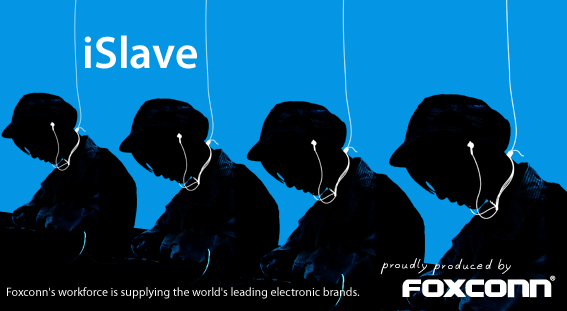
At the boundary 2 blog, Zachary Loeb reviews Goodbye iSlave: A Manifesto for Digital Abolition by Jack Linchuan Qiu. Qiu uses the legal concept and historical institution of slavery to understand the exploitation suffered by both the workers who manufacture iPhones, and the consumers who are hopelessly addicted to them. Read an excerpt from the review below, of the full piece here.
Launched by activists in 2010, the “iSlave” campaign aimed to raise awareness about the labor conditions that had led to a wave of suicides amongst Foxconn workers; those performing the labor summed up neatly as “assembled in China.” Seizing upon the campaign’s key term, Qiu aims to expand it “figuratively and literally” to demonstrate that “iSlavery” is “a planetary system of domination, exploitation, and alienation…epitomized by the material and immaterial structures of capital accumulation” (9). This in turn underscores the “world system of gadgets” that Qiu refers to as “Appconn” (13); a system that encompasses those who “designed” the devices, those who “assembled” them, as well as those who use them. In engaging with the terminology of slavery, Qiu is consciously laying out a provocative argument, but it is a provocation that acknowledges that as smartphones have become commonplace many consumers have become inured to the injustices that allow them to “animoji” themselves. Indeed, it is a reminder that, “Technology does not guarantee progress. It is, instead, often abused to cause regress” (8).
Surveying its history, Qiu notes that slavery has appeared in a variety of forms in many regions throughout history. Though he emphasizes that even today slavery “persists in its classic forms” (21), his focus remains on theoretically expanding the term. Qiu draws upon the League of Nation’s “1926 Slavery Convention” which still acts as the foundation for much contemporary legal thinking on slavery, including the 2012 Bellagio-Harvard Guidelines on the Legal Parameters of Slavery (which Qiu includes in his book as an appendix). These legal guidelines expand the definition of what constitutes slavery to include “institutions and practices similar to slavery” (42). The key element for this updated definition is an understanding that it is no longer legal for a person to be “formally and legally ‘owned’ in any jurisdiction” and thus the concept of slavery requires rethinking (45). In considering which elements from the history of slavery are particularly relevant for the story of “iSlavery,” Qiu emphasizes: how the slave trade made use of advanced technologies of its time (guns, magnetic compasses, slave ships); how the slave trade was linked to creating and satisfying consumer desires (sugar); and how the narrative of resistance and revolt is a key aspect of the history of slavery. For Qiu, “iSlavery” is manifested in two forms: “manufacturing iSlaves” and “manufactured iSlaves.”
Image via boundary 2.